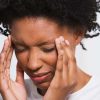- Empty cart.
- Continue Shopping
A Guide to Understanding Sleep Disorders in Women

Sleep is an essential component of a healthy lifestyle. It rejuvenates the body, sharpens the mind, and allows us to function at our best during waking hours. However, for many women, achieving a good night’s sleep can be a challenging task due to the prevalence of sleep disorders.
Disorders in Women
Sleep disorders are not uncommon, and they affect women at different stages of life. It’s estimated that approximately 50 to 70 million adults in the United States have some form of sleep disorder, with women accounting for a significant portion of these cases. The prevalence of sleep disorders in women varies depending on the specific disorder and age group, but it’s a prevalent health concern.
Types of Sleep Disorders in Women
1. Insomnia
Insomnia is perhaps the most well-known sleep disorder, and it affects women more frequently than men. It is characterized by difficulty falling asleep, staying asleep, or experiencing non-restorative sleep. The causes of insomnia in women can be multifactorial and include stress, hormonal changes (such as those occurring during menstruation, pregnancy, and menopause), and psychiatric conditions like anxiety and depression.
2. Sleep Apnea
Obstructive sleep apnea (OSA) is another sleep disorder that women may experience. While it is more common in men, women can still be affected, especially after menopause. Sleep apnea involves repeated interruptions in breathing during sleep, leading to disrupted sleep and increased risk of cardiovascular problems.
3. Restless Legs Syndrome (RLS)
Restless Legs Syndrome, also known as Willis-Ekbom Disease, is characterized by an irresistible urge to move the legs, often accompanied by unpleasant sensations. RLS tends to be more prevalent in women, and its symptoms can worsen during pregnancy.
4. Periodic Limb Movement Disorder (PLMD)
PLMD is a condition where a person experiences repetitive, involuntary limb movements during sleep. While it can affect both genders, it is more common in women, particularly as they age.
5. Narcolepsy
Narcolepsy is a neurological disorder that disrupts the normal sleep-wake cycle. It can lead to excessive daytime sleepiness, sudden muscle weakness (cataplexy), and hallucinations. Women are affected by narcolepsy at a similar rate to men.
6. Circadian Rhythm Sleep Disorders
These disorders involve disruptions in the body’s internal clock, which regulates sleep-wake cycles. Shift work disorder, delayed sleep phase disorder, and advanced sleep phase disorder are examples of circadian rhythm sleep disorders that can affect women, particularly those with irregular work schedules.
Causes of Sleep Disorders in Women
Understanding the causes of sleep disorders in women is crucial for accurate diagnosis and effective treatment. Here are some common factors contributing to sleep disturbances in women:
1. Hormonal Fluctuations
Hormonal changes that occur throughout a woman’s life, such as menstruation, pregnancy, and menopause, can significantly impact sleep. These hormonal fluctuations can lead to symptoms like hot flashes, night sweats, and mood disturbances, all of which can disrupt sleep patterns.
2. Pregnancy
Pregnancy often brings about various physical discomforts, such as back pain and frequent urination, that can make it challenging to get a good night’s sleep. Additionally, hormonal changes during pregnancy can contribute to sleep disturbances.
3. Menopause
Menopause is a significant life transition for women, marked by the cessation of menstruation and a range of hormonal changes. Sleep problems, including insomnia and sleep apnea, are common during this stage.
4. Mental Health
Women are more likely than men to experience mood disorders such as depression and anxiety. These conditions can have a profound impact on sleep quality and duration.
5. Lifestyle Factors
Certain lifestyle choices, such as irregular sleep schedules, excessive caffeine or alcohol consumption, and high levels of stress, can contribute to sleep disturbances in women.
Signs and Symptoms
Recognizing the signs and symptoms of sleep disorders in women is essential for early intervention and treatment. While the specific symptoms may vary depending on the disorder, some common indicators include:
- Difficulty falling asleep or staying asleep
- Frequent awakenings during the night
- Excessive daytime sleepiness
- Snoring or choking during sleep
- Restless legs or leg movements during sleep
- Night sweats and hot flashes
- Mood disturbances, including irritability and depression
- Reduced concentration and memory problems
- Fatigue and low energy levels
Diagnosis and Evaluation
If you suspect that you or a loved one may be experiencing a sleep disorder, it is essential to seek a proper diagnosis from a healthcare professional. The diagnostic process typically involves:
- Medical History: Your healthcare provider will inquire about your sleep patterns, daily routines, and any existing medical conditions or medications that could contribute to sleep problems.
- Physical Examination: A thorough physical examination may be conducted to identify any underlying health issues that could be causing sleep disturbances.
- Sleep Study (Polysomnography): In some cases, a sleep study may be recommended. This involves spending a night at a sleep center while various parameters, including brain activity, breathing, and heart rate, are monitored.
- Questionnaires: You may be asked to complete questionnaires or sleep logs to provide additional information about your sleep habits and symptoms.
Treatment Options
The treatment of sleep disorders in women depends on the specific condition and its underlying causes. Here are some common treatment options:
1. Lifestyle Modifications
Making positive changes to your daily routines and habits can often improve sleep quality. This includes maintaining a consistent sleep schedule, avoiding caffeine and alcohol before bedtime, and engaging in regular exercise.
2. Cognitive-Behavioral Therapy for Insomnia (CBT-I)
CBT-I is a structured therapy that aims to identify and modify the behaviors and thought patterns that contribute to insomnia. It is highly effective and can be particularly useful for women with chronic insomnia.
3. Medications
In some cases, medication may be prescribed to manage sleep disorders. This may include sleep aids for short-term use or medications to treat underlying conditions like depression or anxiety.
4. Hormone Replacement Therapy (HRT)
For menopausal women experiencing severe sleep disturbances, hormone replacement therapy may be considered. However, the risks and benefits should be carefully weighed with a healthcare provider.
5. Continuous Positive Airway Pressure (CPAP) Therapy
CPAP therapy is the primary treatment for obstructive sleep apnea. It involves wearing a mask connected to a machine that delivers a continuous stream of air to keep the airway open during sleep.
In Conclusion, Sleep disorders in women are a complex and multifaceted issue that can significantly impact physical and mental well-being. Understanding the different types of sleep disorders, their causes, and the available treatment options is crucial for women seeking relief from sleep disturbances. If you or someone you know is experiencing sleep problems, it is essential to seek guidance from a healthcare professional who can provide a tailored approach to diagnosis and treatment.
Remember that quality sleep is essential for overall health and vitality, and addressing sleep disorders in women can lead to improved quality of life and well-being. By gaining a better understanding of these disorders and seeking appropriate care, women can take proactive steps towards achieving restful and restorative sleep.








